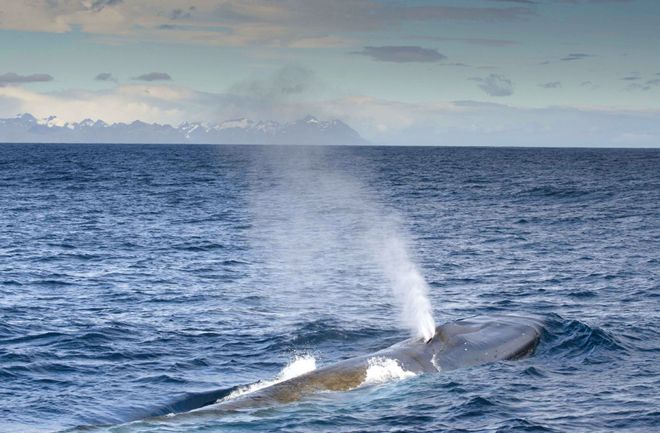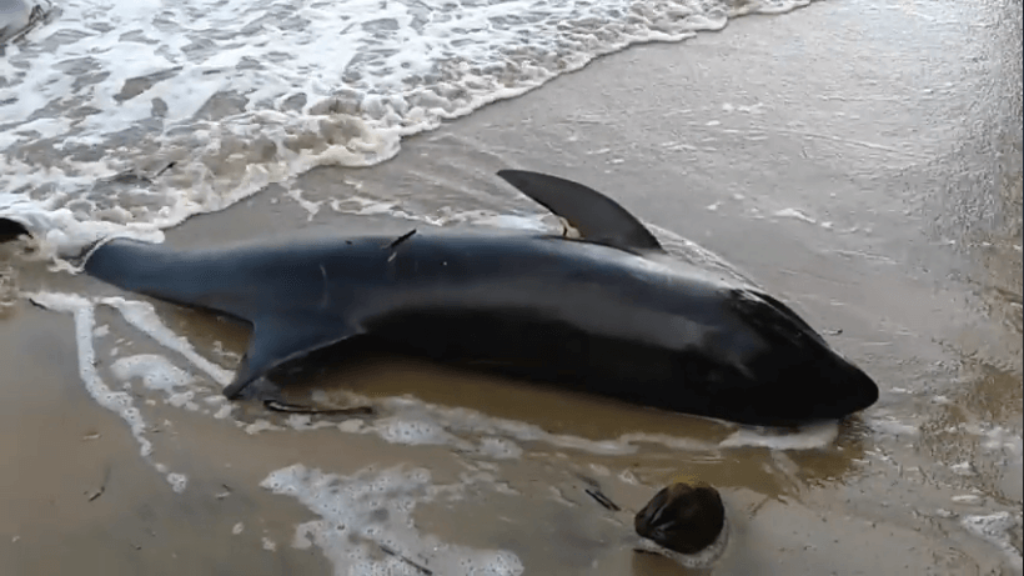Sea Otters are Around
A few Sea Otters were observed during the past few weeks. Full grown Sea Otters can be over one meter long and weigh approximately 25-kg. When they are on the surface, Sea Otters float or swim on their backs, and sometimes, one may see them eating their prey which could be crabs, clams, and sea urchins. Sea Otters are occasionally seen in channels and inland waterways, but they are more abundant on the outer coast of Vancouver Island and further north along the Coast. An interesting fact about Sea Otters is that they have the densest hair of all mammals, with over 100000 hairs per square centimeter. We welcome all sighting reports of Sea Otters where-ever you see them in B.C.
There have been about 30 sightings of Transient Orca. Transient Orca were observed hunting and catching a sea lion and on another occasion, Transients were seen chasing Harbour porpoises. On February 26th, Northern Resident Orca were observed near Hernando Island and they were close to shore rubbing along rocks on the sea floor. A few days later, Northern Resident Orca were observed again south of Cape Mudge (Quadra Island).
Dall’s porpoises were seen regularly in Toba Inlet and appear to be spread out in the inlet. A few Dall’s porpoises travelled through Discovery Passage and passed Campbell River, which doesn’t happen very often. Pods of Pacific White-Sided dolphins were observed with the largest pod numbering around 50. Rounding our report are a few sightings of Humpback whales and Harbour porpoises.
Boaters, please use caution on the water. Federal laws require boats to remain at least 400-m away when viewing Southern Resident Orca in critical habitats and for other types of Orca, laws require boats to remain at least 200-m away from them. For other species of whales, dolphins, and porpoises, boats must keep a minimum distance of 100-m away from them but the minimum distance changes to 200-m if there is a calf OR if the Cetaceans are resting. Remember N.E.W.S. when you see a whale, meaning put your boat in NEUTRAL, ENJOY the view, WAIT till the whales are at a fair distance, and then SLOWLY leave the scene.
WOWs works throught the year, so please continue to keep your eyes open, and report your sightings to us.
Review our current Volunteer Job Postings
Archive Explorer navigates 21,000+ Cetacean Sightings, images, videos and audio recordings.
*Recommended for desktop browsers and newer mobile devices
Archive Explorer dives into the Coastal Cetacean world. View Cetacean sighting locations, photos and videos:
- All species including Orca, Humpback, Grey Whale or Dalls Porpoise
- Follow the endangered Southern Residents Orca in the Salish Sea
- Search for encounters with T002C2 Tumbo
- Witness a close-up Orca encounter video in Port Alberni harbour
- Follow the T010s Transients as they hunt and travel the inside passage
- Track "KC", the ever popular Humpback's movements
- Locate any of 12,000 named locations on the BC and WA State coast
- Print custom sighting reports and maps (Coming Soon)
Archive Explorer Help Page explains many advanced functions
Send your Comments and Questions to: Archive Explorer Feedback
COMING SOON: Our New Archive Dataset Interface is in the works, but we don't want to hold up any ongoing research.
To access 21,000+ sightings in our database to November issue #2019-049 in a downloadable csv file for use in a spreadsheet, please Click Here.
The news comes one day after Ottawa announced new measures to protect the endangered species. About 400 right whales remain, with only 100 breeding females.
The entangled right whale, named Dragon, was spotted on Feb. 24 with a buoy lodged into the right side of her mouth, according to the New England Aquarium….
read on
On Friday, the owner of Fin and Fly Charters in Cocoa Beach, his captain Parker Miley, and their guests spotted the mammals at Jetty Park in Port Canaveral. The group also saw dolphins swimming close to the whales. Glasner recognized the adult whale as Halo – named because of white markings on her head….
read on
Ms Elsdon said the hunting skill of the orca was on full display, with at least three pods working in concert for at least an hour to seal the beaked whale’s fate….
read on
Scientists have long wondered why whales-baleens, such as humpbacks and blues, and toothed whales, such as sperm and killer whales-travel up to 18,840 kilometers every year between their feeding grounds in polar waters and warmer, tropical seas. Previously, researchers thought that after feeding in the Arctic or Antarctic, whales traveled to the tropics to give birth far from their usual predators….
read on
South Georgia was the epicentre for hunting in the early 20th Century….
read on
By analyzing more than 42,000 minke whale boings, scientists have found that, as background noise intensifies, the whales are losing their ability to communicate over long distances. This could limit their ability to find mates and engage in important social contact with other whales….
read on
The Zoological Society of Trinidad and Tobago (ZSTT) in a public advisory on Sunday said this is not the first time that this species of whale has stranded in Trinidad, as reports go back over a decade with isolated incidents in Manzanilla and along other east coast beaches….
read on







